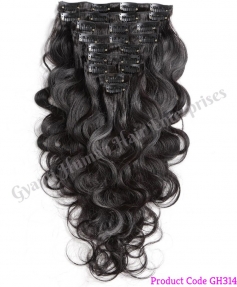Introduction
The global market for human hair has experienced significant growth in recent years, driven by increasing demand for hair extensions, wigs, and other hair products. For suppliers and wholesalers, exporting human hair presents both challenges and opportunities. This blog post will delve into the key factors to consider when exporting human hair, including market trends, regulatory requirements, logistics challenges, and ethical sourcing.
Market Trends and Demand
Understanding the global market for human hair is crucial for successful exporting. Key trends and factors driving demand include:
- Growing Demand for Hair Extensions: The popularity of hair extensions, particularly among women, continues to rise worldwide. This is fueled by factors such as social media influence, celebrity trends, and increased acceptance of hair alterations.
- Increasing Awareness of Hair Loss Solutions: As awareness of hair loss conditions and treatments grows, there is a corresponding increase in demand for hair replacement products, such as wigs and hairpieces.
- Cultural and Fashion Trends: Different cultures and fashion trends can influence the demand for specific types of human hair. For example, certain ethnic hairstyles may require unique hair textures or lengths.
Regulatory Requirements and Compliance
Navigating the complex regulatory landscape is essential for successful human hair exports. Key considerations include:
- Export Licenses and Permits: Depending on the destination country, you may need to obtain specific export licenses or permits. Research the requirements of your target markets to ensure compliance.
- Customs Regulations: Familiarize yourself with customs regulations, including tariffs, duties, and import restrictions, to avoid delays and penalties.
- Product Labeling and Packaging: Ensure that your products meet labeling and packaging requirements, including the declaration of origin, content, and any relevant warnings or certifications.
- Ethical Sourcing and Fair Trade: Many consumers and businesses are increasingly concerned about ethical sourcing and fair trade practices. Consider obtaining certifications or certifications that demonstrate your commitment to these principles.
Logistics and Supply Chain Management
Efficient logistics and supply chain management are critical for successful human hair exports. Key challenges and considerations include:
- Quality Control: Implement rigorous quality control measures to ensure that your hair meets the highest standards of quality and consistency. This includes testing for factors such as texture, color, and durability.
- Packaging and Transportation: Choose appropriate packaging materials to protect your hair during transportation and prevent damage. Consider using specialized shipping containers or methods to ensure safe delivery.
- Inventory Management: Maintain accurate inventory records to avoid stockouts or overstocking. Implement effective inventory management systems to optimize your supply chain.
- Risk Management: Develop strategies to mitigate risks such as shipping delays, customs issues, and market fluctuations. Consider purchasing insurance to protect your shipments and investments.
Ethical Sourcing and Sustainability
Ethical sourcing and sustainability are becoming increasingly important in the human hair industry. Consider the following factors:
- Hair Source: Ensure that your hair is sourced ethically and responsibly. Avoid hair that is obtained from forced labor or child labor.
- Traceability: Implement systems to track the origin of your hair and ensure that it meets ethical standards.
- Sustainability: Promote sustainable practices in the production and processing of human hair. This may include minimizing waste, reducing environmental impact, and supporting fair trade initiatives.
Market Research and Competitive Analysis
Conduct thorough market research to identify potential export markets, understand consumer preferences, and assess competition. Key factors to consider include:
- Market Size and Growth: Identify countries with significant demand for human hair products and assess their growth potential.
- Consumer Preferences: Research consumer preferences for different types of hair, textures, colors, and styles.
- Competitive Landscape: Analyze the competitive landscape in your target markets to identify opportunities and potential challenges.
Building Relationships and Networking
Building strong relationships with buyers, distributors, and other stakeholders is essential for successful human hair exports. Consider the following strategies:
- Attend Trade Shows and Exhibitions: Participate in industry events to network with potential buyers and partners.
- Online Marketplaces: Utilize online marketplaces and platforms to reach a wider audience and connect with buyers from around the world.
- Direct Sales: Develop direct sales channels to reach end-consumers, such as through your own website or online store.
- Partnerships: Collaborate with local distributors or agents to expand your reach and navigate foreign markets.
Conclusion
Exporting human hair presents both challenges and opportunities for suppliers and wholesalers. By understanding market trends, complying with regulatory requirements, managing logistics effectively, and prioritizing ethical sourcing, you can position yourself for success in this growing industry. Continuous market research, building strong relationships, and adapting to changing market dynamics are essential for long-term success.
Related Blog


















































































